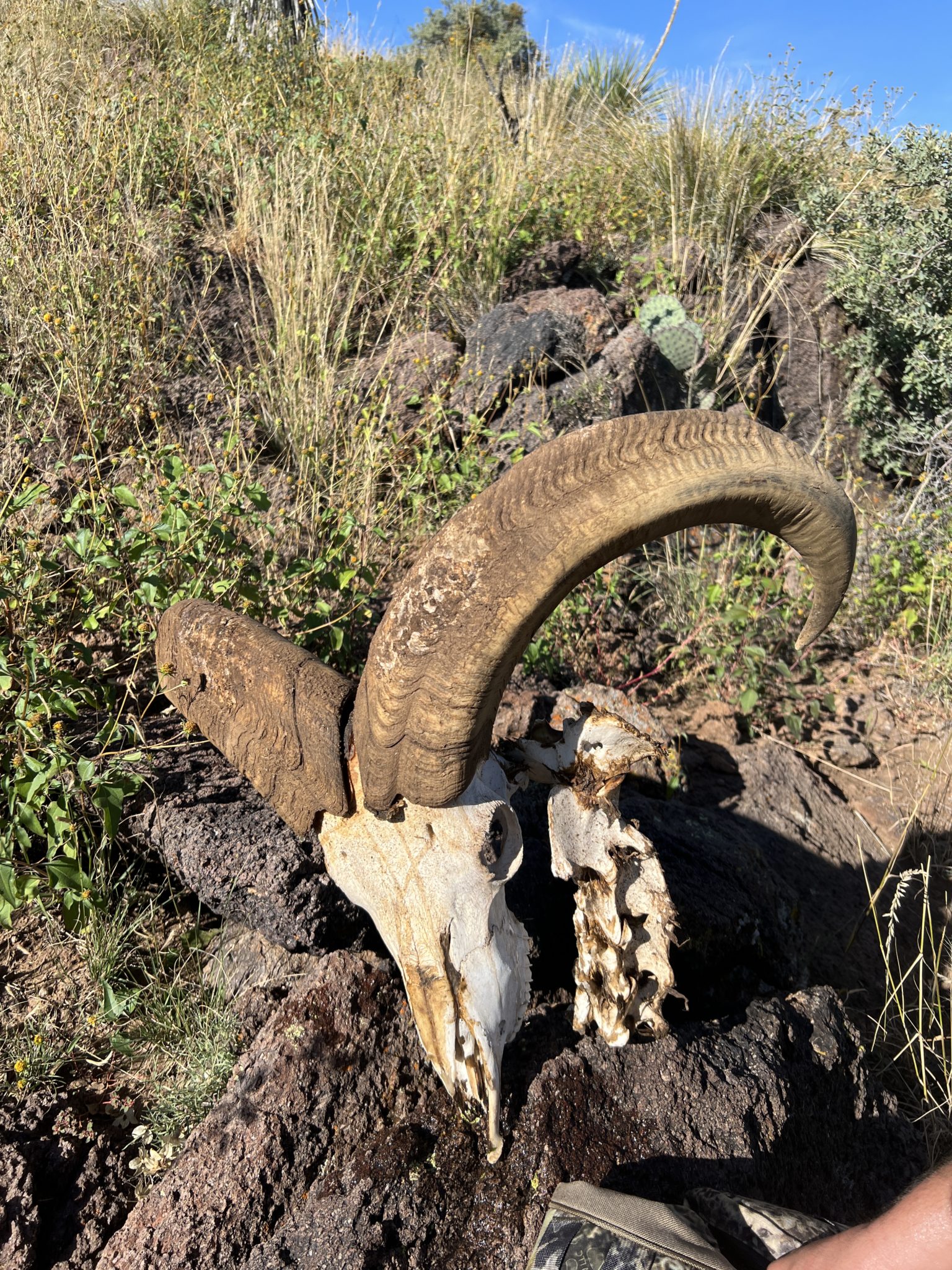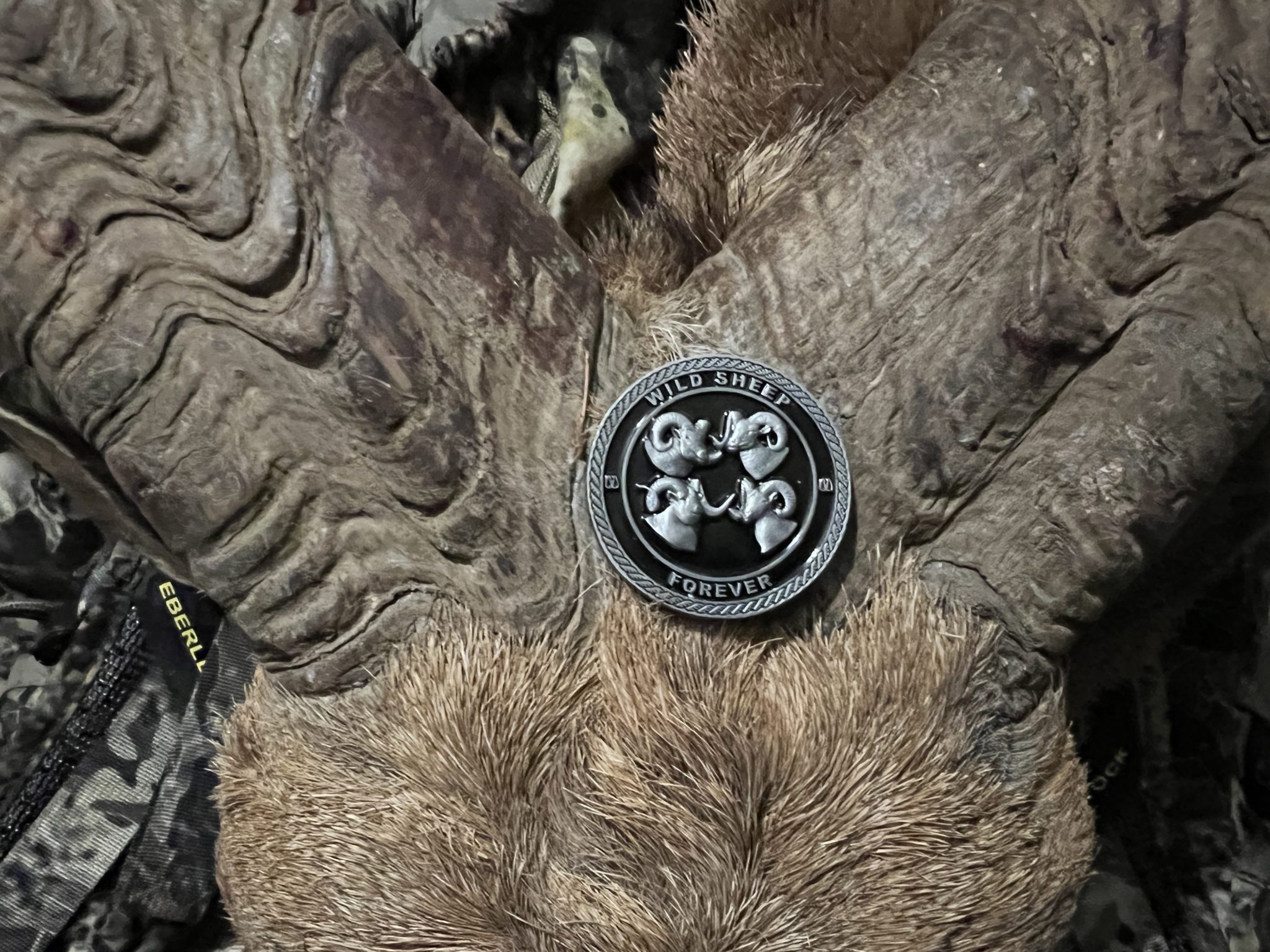Theologians have argued for centuries as to why in the Christian Bible (Genesis 22), a ram was sacrificed instead of a lamb. On our hunt, however, an actual ram was sacrificed for reasons that you are about to find out.
Hunting mountain game is one of my passions and I have a particular zeal for the wild sheep. My goal has always been to harvest wild sheep in their native range. The one sheep for which I was willing to bend the rules is the Aoudad. The reason is simple; an Aoudad hunt in its native Chad or Sudan range will set you back $30K in permits plus travel. For a working family man, such costs are out of the question. The alternative: a handful of transplanted Aoudads that were brought to Texas in the 1930s have established a stronghold in the West Texas mountains and are thriving far better than their African ancestors. With an estimated population of around 30k animals, they have started competing for range with the native mule deer and the desert sheep and the state is looking at culling some of the population using helicopters. Perhaps the good Lord should have considered another land bridge similar to the one at the Bering Sea but between Africa and North America as that would have meant a robust Aoudad and other African game populations in NA.
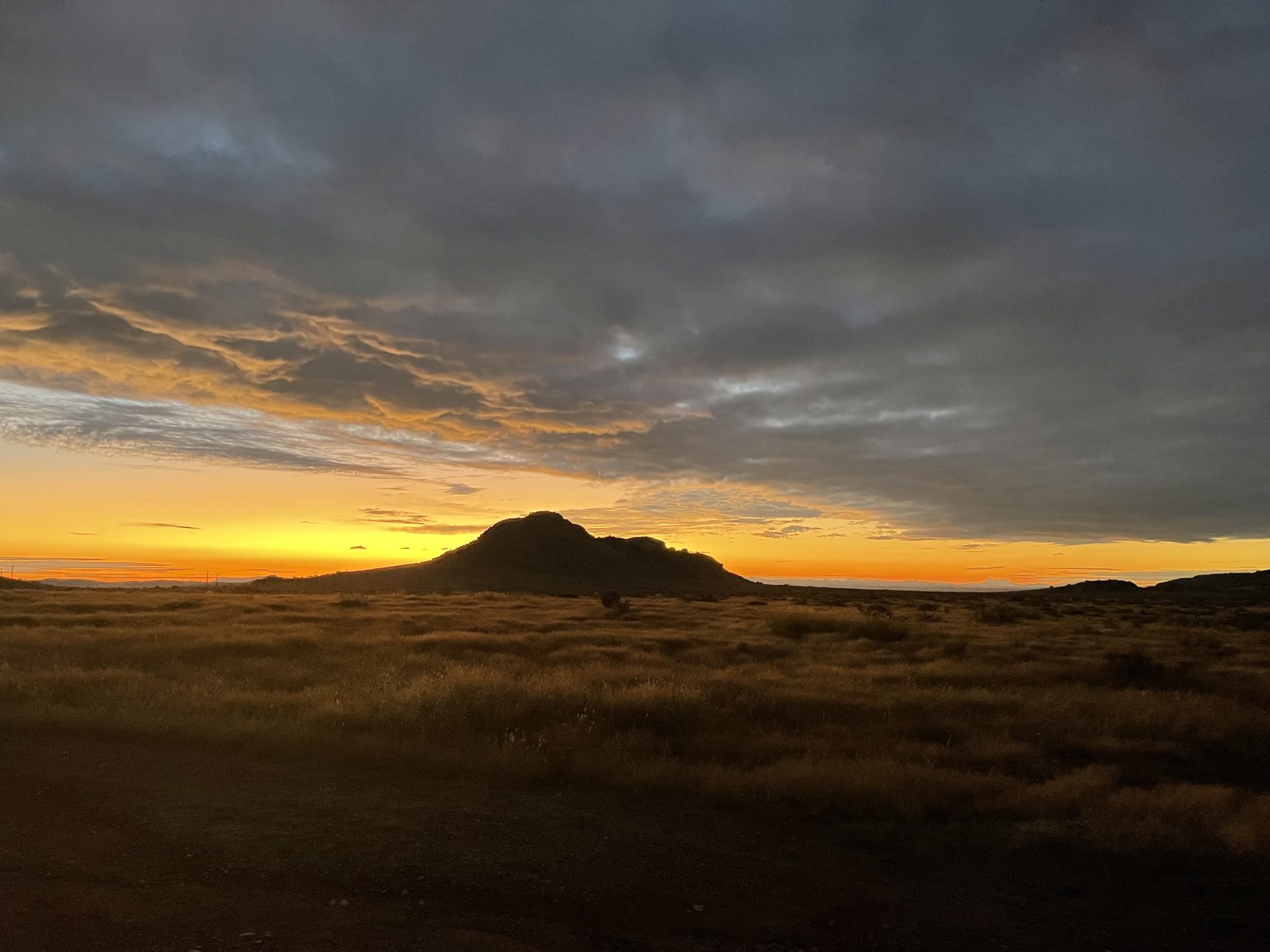
West Texas Sunrises are spectacular
As I do on all my non-North American mountain hunts, I dedicate a fair amount of time to studying the animal’s taxonomy, behavior, maturity recognition, hunting style, and the terrain. For the Aoudad, let me share a fact sheet synopsis I put together before my hunt. My sources are Raul Valdez and Gerhard Damm’s books from my sheep/goat library.
Aoudad or Ammotragus lervia is an interesting game animal endemic to several countries of the North African continent. Introduced populations exist in the US, Spain, and South Africa. There is much disagreement as to how many subspecies exist. I am not a wildlife specialist, but my opinion is that because of the proximity and the overlap of the distinct population segments, the morphological differences are minor and likely due to environmental conditions. If this is so, it likely means they are all the same species.
Scientists often regard the Ammotragus as an “aberrant” sheep (meaning diverging from the norm) but with goat-like features. Biochemical analysis suggests that they share common features with both the wild sheep and the goats. In general, they are “goat-like” in all characteristics except for the lack of the chin beard, and their horn shape more closely resembles the moufloniform sheep. They do however possess the stench of the goat genus, especially during the rut.
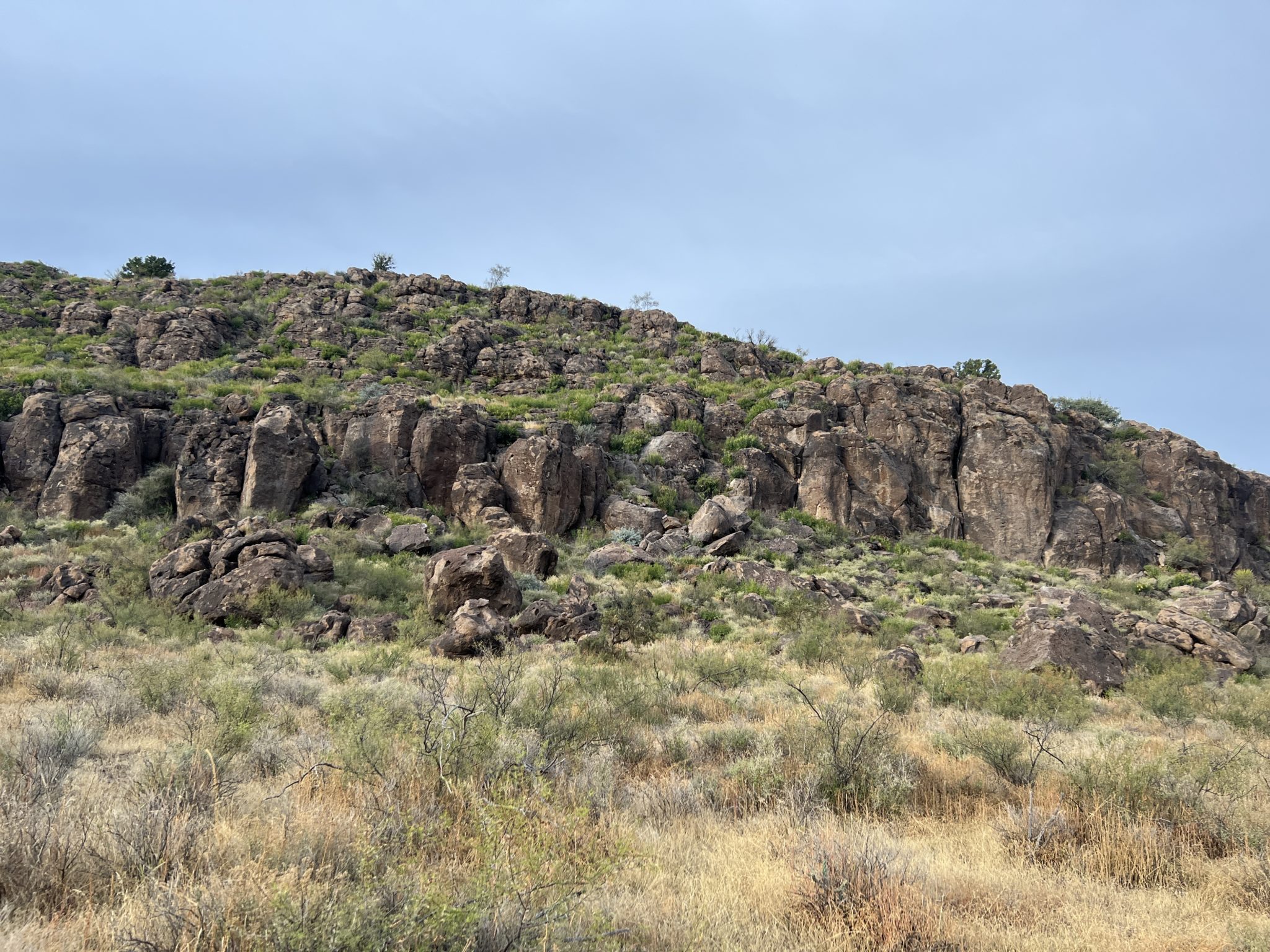
Typical Audad habitat of West Texas
It is still not certain as to how Aoudad evolved from either the sheep (Ovis) or the goat (Capra) genus but the general assumption amongst ungulate scientists (Schaller et al.) is that they originated from a goat stock during The Pliocene era. There is also no clear evidence whether they emigrated from Eurasia to their present location in the African continent or whether they evolved in Africa from one of the primitive Caprinae species.
The Aoudad are unique and their Latin name Ammotragus lervia was derived from the Greek words “Ammos” which means sand and “tragus” which translates to the word goat. The word lervia is derived from the wild sheep of Africa described as “lerwee” by British explorer Thomas Shaw. The common or vernacular name Aoudad has its origins in the Berber languages of the African continent.
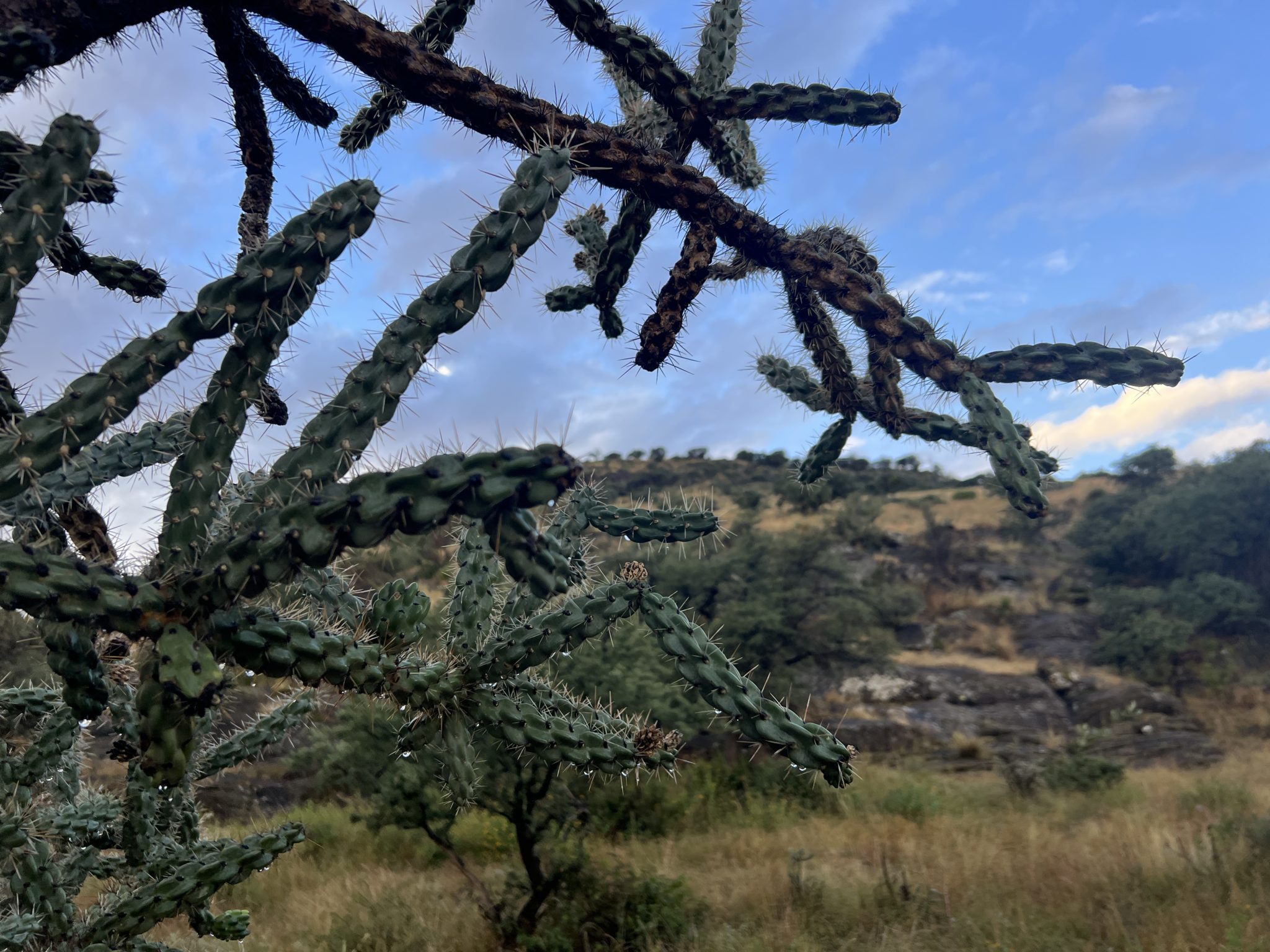
Every plant has a poke to offer!
Aoudads are stout and muscular with short legs. Shoulder height for an adult male is around 40” with an average weight of 270 lbs. Their front quarters are more massive than their hindquarters, similar to that of an American mountain goat. They have callused knees and no pedals. They also lack the preorbital glands common to sheep but do possess the subcaudal glands. As mentioned above, there is no beard as in true goats, but they carry a very well-developed ventral mane on their throats, chest, and upper parts of their legs which are commonly referred to as “Chaps”. In well-developed males, the chap extends to their knees. The chaps are peculiar in the sense that they are not present in any other Caprini genus.
A massive pickup that is coming home as well.The horn shape of the Aoudad rams does not resemble that of the wild goats but there are similarities to the Dagestan Tur of the Caucuses in Azerbaijan as well as the Bharals of Tibet and Pakistan. In general, their horns are more sheep-like, and therefore they are often called “Barbary Sheep”, their vernacular name. Their horn structure is elliptical and keeled in cross-section with a broad frontal surface. On the African continent, the horn lengths in rams rarely exceed 35” with basal circumference of up to 13 ½”. The longest Aoudad horns came from northern Chad measuring 34 ½” with basal circumference of 15 ½”. Females also grow horns, but much thinner and shorter.
Aoudads are herbivores and not particularly fussy about their diet; consuming shrubs, forbs, and grasses depending on seasonal availability. They can survive without water for long periods (even years) as long as they can depend on the available succulent flora with high moisture content. Like any other desert dweller, they are mostly active at the cooler periods of dusk and dawn except during the rut which puts the males on steroids!
Their predator evasion strategy is either by fleeing or freezing still and concealing themselves in cover. They bleat, snort, screech, grunt, and growl. They rarely survive past 11 years in their native range.
Their current CITES listing is in Appendix II and according to ICUN’s red list published in 2008, there are an estimated 5,000 to 10,000 Aoudad roaming in the wild of their native North African landscape. They have been, and still are, frequent casualties of poachers, oil and gas exploration, and habitat encroachment by human development.
On to the hunt . . .
My most trusted sheep hunting partner is Carl Tatarin. We have hunted in Central Asia as well as Alberta on several occasions. After having our Azerbaijan Tur hunt canceled for three years in a row, we decided to hunt closer to home and booked an Aoudad hunt with Ross Coffey of the Great American Hunting Expeditions. Ross is a straight arrow who only guides for free-roaming Aoudad and only allows the taking of mature rams. This saved me the usual request of the “age before beauty” spiel. He lives on his large ranch which hosts two mountain ranges, has no high fences, and is located about 30 minutes out of Fort Davis: a ranch with a 150-year history of homesteading. He knows the behavior of the Aoudad at different times of the year, their movement patterns, and how to get you close enough to a mature ram and within the reach of your rifle and your shooting abilities. On top of that, he is just a good chap to share a campfire with.
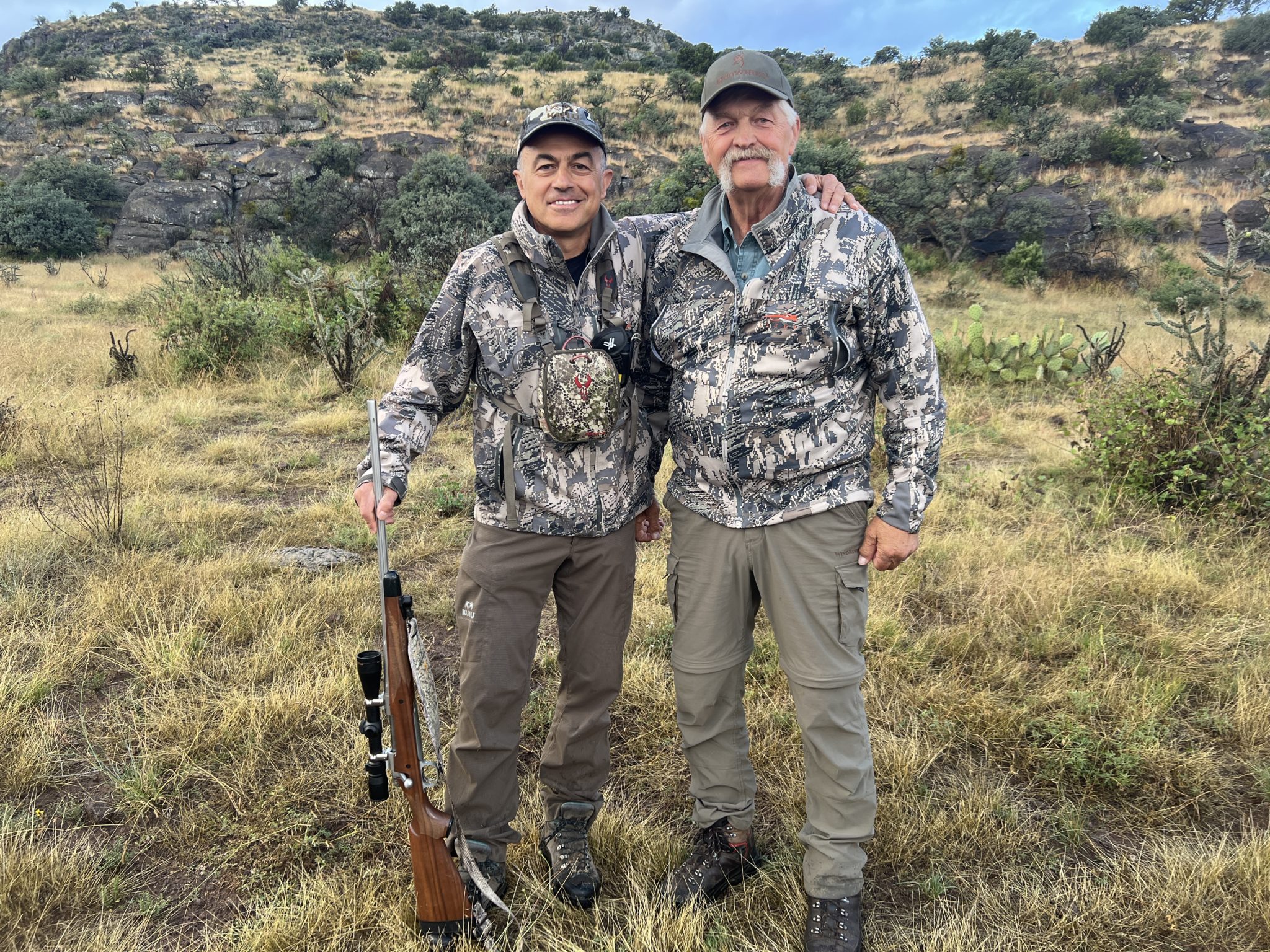
The best sheep hunting partner in the world.
I didn’t expect this hunt to be physically challenging and it was not. The high success rate amongst outfitters confirms that as the sheep are abundant. However, the major challenges we had to face were avoiding every darn plant which has something sharp to poke you, rattlesnakes, and loose gravel that is covered with grass. You certainly don’t want to be hiking in this terrain in the dark. And please, wear sturdy boots and chaps or at least gaiters.
The sheep are dispersed widely in the Davis mountains of West Texas and the best way to get there is via arrival in Midland; a 3-hour drive. After arriving at our agreed meeting point and shaking hands with Ross and his helper guide Rob, we knew right away we were in good hands, and shortly thereafter, we were laying prone firing a few rounds to test the zero of our rifles. To avoid the hassles associated with bringing our rifles across the border, my friend Gary Moseley of Shiner, Texas whom I had built a custom 300 WM for a few years back decided to join our party and brought along two rifles for all of us to use. The rifles shot true and we went for a “game drive” to see if we could spot sheep and get our eyes used to their pelage.
Sure enough, just before dark, we saw two bands of sheep that were climbing the hills. They had a reddish or “Henna” looking color and were all in herds; rams, ewes, and lambs all mixed up. We then returned to camp.
Ross’s camp is a cozy yet large 4-bedroom bungalow with a great living room and is he ever a good cook. Brisket and ribs were in the cards for our arrival supper and Gary had brought enough Shiner beer to hydrate a whole platoon. Ross also owns two lovely Australian shepherd dogs named Suri and Inca which of course we fell in love with at first sight.
Morning came and off we went driving to the south mountain range to look for sheep. These sheep are smart and have figured out how to evade predators. The south mountain range is only accessible via two spots and the rest is impassable unless you carry rope, pitons, and cams. Carl and Rob went their own separate ways so did Ross, Gary & myself.
After about an hour of hiking the hills, we spotted a band of sheep perched on some barrancas in the distance. With careful examination of the wind, we flanked the mountainside and got to within 530 yards. I am comfortable shooting that far especially with a rifle and load I have built myself. The problem however was the rest which was nothing but a small uneven rock and besides, the presence of tall grass made it impossible to lay prone or even shoot off my knees. We were able to close the distance to 350 yards but again, the only rest was through a thick mesquite tree which once I started to clear a couple of branches off for a rest got the attention of the sheep and they fled at once. We came off the mountain and radioed Rob to pick us up. As we all drove around the back side of the southern mountain range, suddenly Carl noticed a group of rams running at the base of the mountain ahead and trying to climb. He left the truck, got into position, and shouldered Rob’s 06 for the shot while I quickly gave him a 220-yard range. The 06 barked and on Carl’s second shot, the ram collapsed. I got so excited that I started running uphill to see the ram and, in the process, crashed into a tall bush named “Althorns”. I don’t think I need to elaborate more as to what happened next!
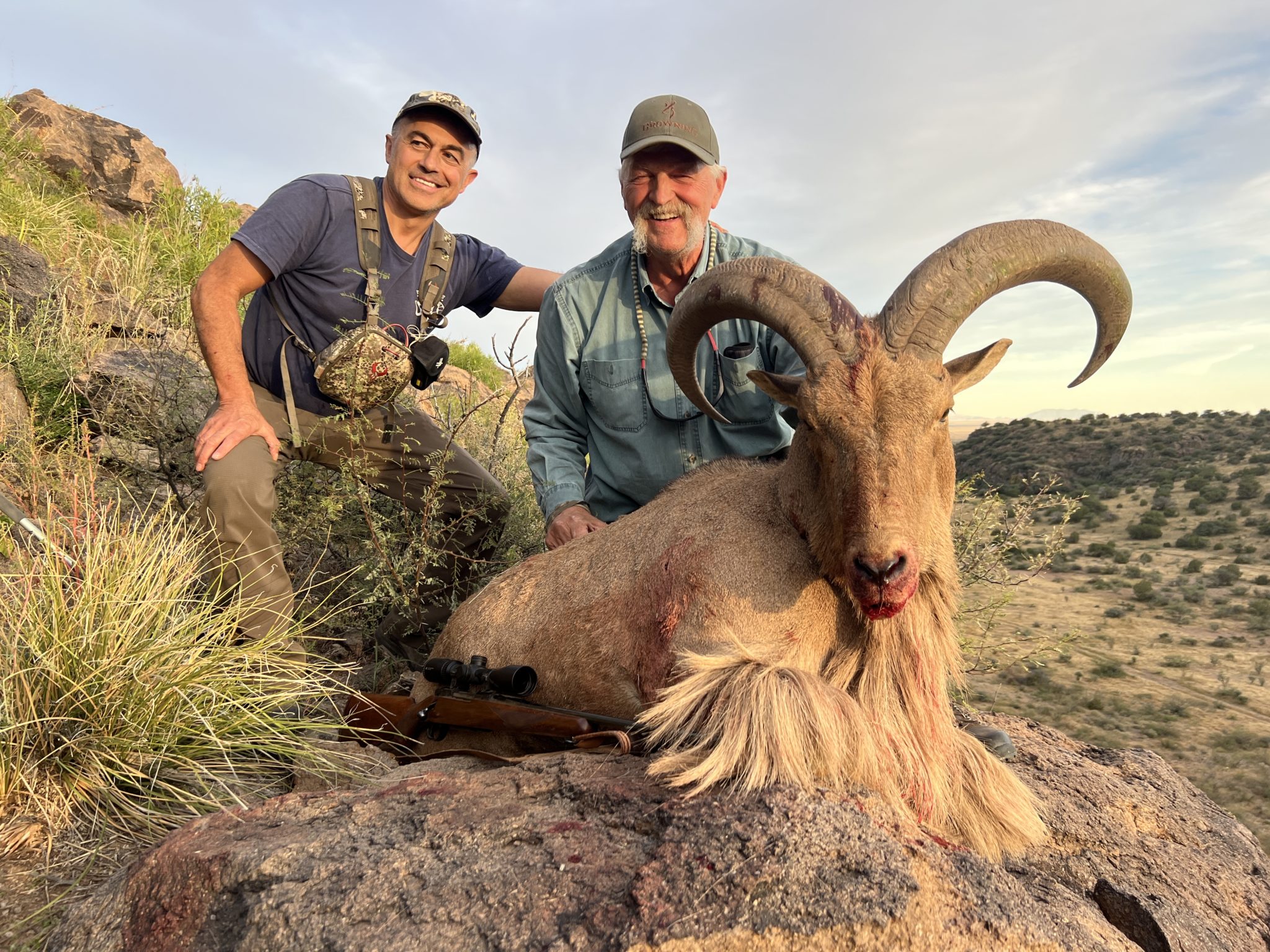
Carl was extremely pleased with his Ram, and I am glad I was there to celebrate the moment.
The picture session was followed by caping the ram and we made it down the mountain just before darkness descended. On our way back to the camp is how the title sacrificial ram was coined. As we drove in almost darkness, we noticed a big herd of sheep running in the flats going north from the south mountain range. We were certain that this migration was because Carl’s ram was shot in the south range and one that had forced the sheep to migrate towards the north range which as it stands is a lot easier to scale and approach. Ergo, I called Carl’s ram the sacrificial ram as it gave his life for the success of the rest.
Once we arrived at camp, Ross’s Mexican amigo who owns a tavern close by had cooked up a delicious Mexican fiesta meal which once again was washed down with more cold Shiners. I attended to my scratches and decided right then and there that “thou shall never take his eyes off his feet in these mountains”.
Day 2 was a carbon copy of day 1. We spotted sheep and made two stalks which were blown by the swirling wind. I did find a fantastic pickup skull/horn which I also planned to bring home. On the way down the mountain and through a steep gorge, unknowingly, I stepped to within 6” of a bedded rattlesnake. Hearing his rattle sent me to a catapult jump; one that I had never imagined I was capable of. I escaped unharmed and was thankful to the Creator for this divine intervention. A snakebite would have ended not just my hunt but would have badly messed up the other’s hunts as well.
In this country and at this time of the year when the temperatures hover around 80F, you are better off taking a noon break as the sheep do the same and bed down under trees/shrubs becoming completely invisible. They start to rise again to feed after 3 pm.
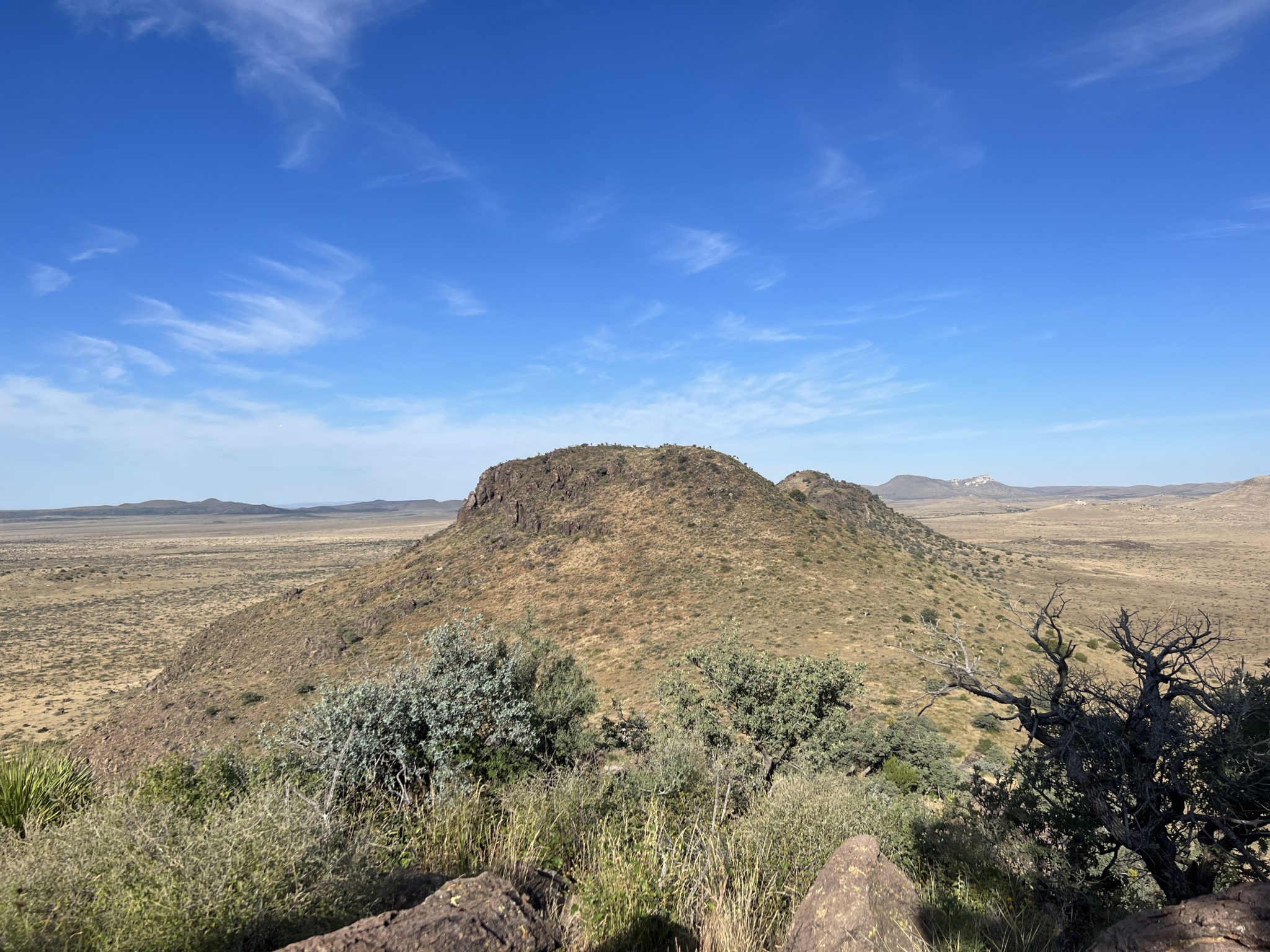
Our stalk was busted because of swirling winds.
On that same afternoon, just as we had left the camp around 4 pm, we noticed a band of four rams running for the hills. Ross took a quick peek and picked the best ram which was on the far left. We left the truck, went for a stalk, and once I spotted them, I shouldered the 300 and in haste but with a slight lead, took a couple of running shots at the biggest ram which was in a full run at around 340 yards. I heard a smack, but they kept running and disappeared out of sight. Rob and I followed to where we had seen them last to look for blood. The rest of the party left to look for a ram for Gary. We zigzagged the entire area to no avail, and I was a bit mad at myself for having taken the shot. We then decided to climb to the other side of the mountain and glass. Two hours later as we were perched on a great vantage point, we heard a shot from the back side of the mountain and got ready in case a mature ram showed up. A band of sheep showed up 700 yards out with a good ram amongst them. However, we were totally exposed, and the wind was also in their favor. We decided to call it a day and climb down the mountain. It was 6:15 pm and darkness would come around 7:00.
Right at that moment, we got a text from Ross that he had located the ram I had lost earlier. The ram was bedded in tall grass and Ross gave us some directions to his whereabouts. My spirits were raised instantly, and I put on the afterburners to climb back up again and approach the ram from above. This process took roughly 40 minutes, leaving about 5 minutes of glassing and shooting light.
As we carefully and methodically glassed the slope with the tall grass below us, we noticed what looked like a pair of split bananas joined at the stem. There he was bedded some 120 yards downhill from us, unaware of our presence and all we could see was the tip of his horns. Now you get a feel for what I am talking about when I said the grass was tall. It resembled the African savannah. Suddenly, I noticed I was burning in several places inside my clothing. Having been obsessed with locating the sheep, I had involuntarily sat on an ant hill which of course allowed them to crawl inside my clothing and torment the giant who had collapsed their castle. I had to suck it up and keep my mouth shut as the ram could spook any second.
I set up for the shot and it was now just a waiting game for him to get up as any animal does. The instant he got up; I sent a 130-grain 270 bullet his way which sent him to a spiral roll down the mountain. I was so delighted that Ross had located the ram and that I was able to finish him off myself, not leaving the coup de grace to the coyotes. After the usual high fives and a handful of photographs in the fading light, Ross caped the ram and it was pitch dark and spitting rain when we finally got off the mountain. We celebrated our success with a beautiful medium rare beef ribeye, warm water lobster, bacon-wrapped shrimp, trimmings, and of course more Shiner beer. Sleep was sweet despite the ant bites as I already had my sheep in the salt bag.

I was elated to lay my hands on this 12-year-old ram with Carl and Gary present to cherish the moment.
It rained all night, but we rose to a gorgeous mix of clear/cloudy skies. After breakfast, we drove out and parked the truck to look for sheep, this time for Gary. Several coyotes were howling, and the mood felt like a scene out of a Western movie.
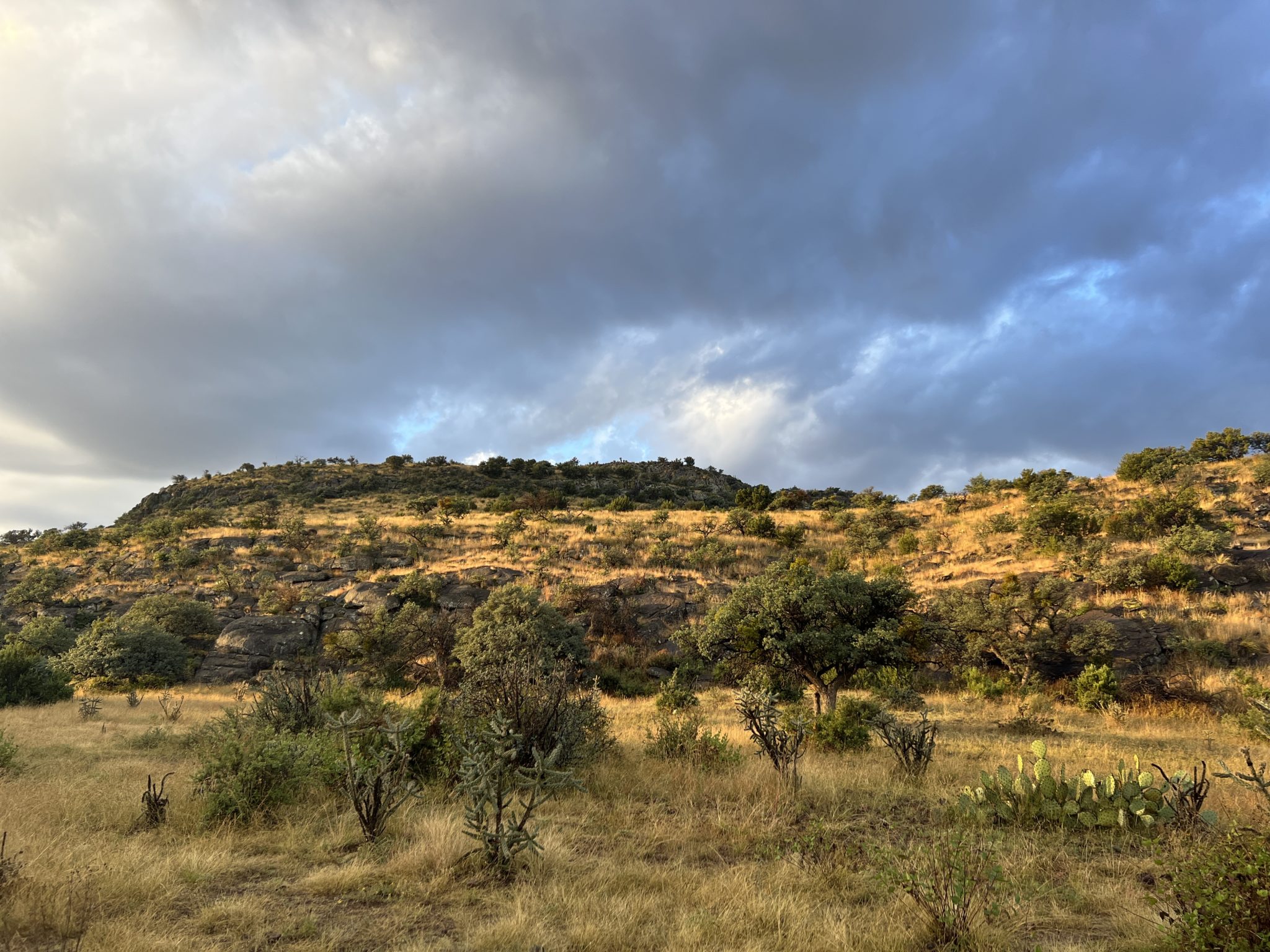
Looking for Gary’s ram collectively
Within half an hour, we spotted a band of sheep that were still in the flats with a nice dark ram amongst them. Carl, Rob & I stayed behind while Gary and Ross went on an imminently doable stalk. Gary’s third shot connected with the ram at 300 yards, but the ram kept on going and disappeared over a rise. We all reconvened, spread out, and started looking for Gary’s ram. After searching for close to an hour with no blood trail, Ross finally found him dead under a Mesquite tree. I had passed up within 10 yards of that same tree, but these sheep can hole up in a tiny spot and become invisible quickly.
We took our time enjoying the West Texas mountain scenery for one last time, took several pictures, and thought about all the blessings that we were showered with including three mature rams in three days, evading all sorts of thorns and even a rattlesnake and having indulged in a ton of good laughter, razzing each other and stories. The trip back to camp was a joy as we reminisced on our four-day hunt together while listening to the famous “the road goes on forever and the party never ends” by Robert Earl Keen.
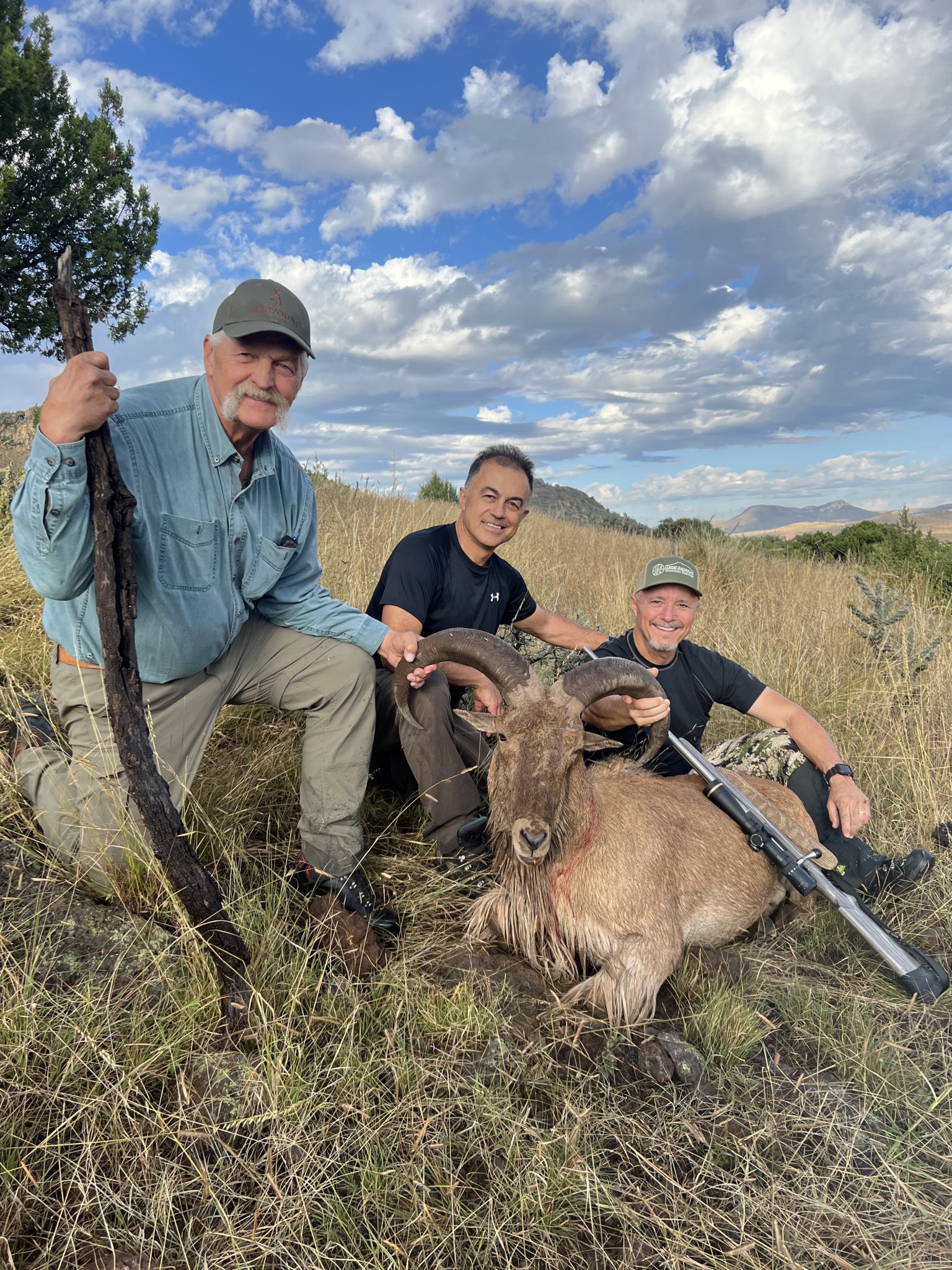
Morning glory with “Los Tres Amigos” and a great ram to boot.
As I said in the beginning, this was not a hard hunt but one that will go down in our hard drives for keeps. Every time that we will glance at our mounted trophies, it will undoubtedly remind us of the beautiful mountains of West Texas, its elusive Aoudad, and its hospitable folks. God bless Texas and y’all make sure you go and experience this hunt at least once in your lifetime!


